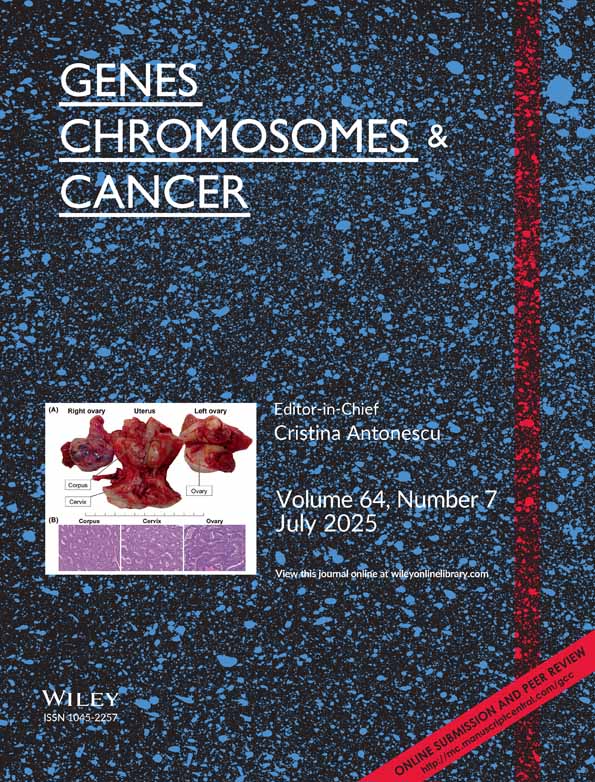Loss of neurofibromatosis type I (NFI) gene expression in pheochromocytomas from patients without NFI
Abstract
The neurofibromatosis type 1 (NFI) gene encodes a tumor-suppressor protein termed neurofibromin, which, in adults, is expressed predominantly in neurons, Schwann cells, and the adrenal medulla. Loss of NFI gene expression has been reported in Schwann cell tumors (neurofibrosarcomas) from patients with NF1 as well as in malignant melanomas and neuroblastomas from patients without NF1. Previously, we demonstrated the lack of neurofibromin expression in six pheochromocytomas from patients with NF1, supporting the idea that neurofibromin might be an essential regulator of cell growth in these cells. To determine whether NFI gene expression is similarly altered in pheochromocytomas from patients without NF1, we examined 20 pheochromocytomas for the presence of NFI RNA and neurofibromin by reverse-transcribed polymerase chain reaction (RT-PCR) and immunohistochemistry, respectively. Reduced or absent NFI gene expression was documented in 7 of these 20 tumors (35%) including 1 of 4 sporadic tumors, 3 of 10 tumors from patients with multiple endocrine neoplasia (MEN) 2A, 2 of 4 tumors from patients with MEN2B, and 1 of 2 tumors from patients with von Hippel-Lindau syndrome. In addition, most of these tumors expressed predominantly the type 1 NFI isoform (75% type 1 NFI isoform expression) as opposed to other neural crest-derived tissues such as adrenal gland and Schwann cells, which express predominantly type 2 NFI. This type 1 isoform predominance was also observed in the rat pheochromocytoma PC 12 cell line, suggesting that this change in isoform expression may be associated with the genesis of these tumors. These results collectively demonstrate that loss of NFI gene expression is associated with progression to neoplasia in tumors originating from neural crest-derived cells in patients without clinical manifestations of neurofibromatosis, and they support the notion that neurofibromin is a tumor-suppressor gene product involved in the pathogenesis of a wide variety of tumor types. © 1995 Wiley-Liss, Inc.




